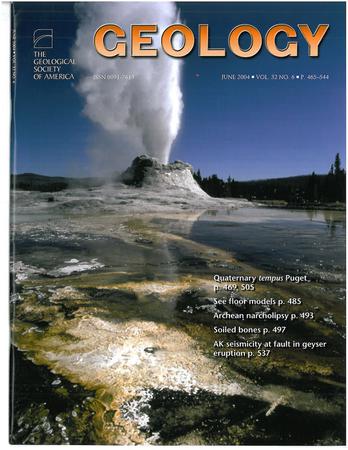Grand Canyon landslide-dam and paleolake triggered by the Meteor Crater impact at 56 ka
IF 4.6
1区 地球科学
Q1 GEOLOGY
引用次数: 0
Abstract
This paper hypothesizes that the Meteor Crater impact in Arizona, USA, 56,000 years ago triggered landslides in Grand Canyon that dammed the Colorado River and formed Nankoweap paleolake. This is compatible with shock and earthquake physics for the impact that infer a M5.4 seismic event, attenuated to an effective magnitude of M3.5 at Grand Canyon. Results that support the hypothesis include radiocarbon dating of driftwood and luminescence dating of associated slack-water lake sediments that are preserved in caves up to 60 m above the modern Colorado River. Radiocarbon ages from two locations, including Stanton’s Cave, date the driftwood as 55.25 ± 2.44 ka (n = 4). Sediments associated with the driftwood gave a luminescence age of 56.00 ± 6.39 ka (n = 2). These six Grand Canyon dates, and three published ages for the Meteor Crater impact, show statistically indistinguishable results that support the hypothesis for a geologically instantaneous series of events with a mean age of 55.60 ± 1.30 ka. This work highlights the value of radiocarbon dating near the limits of the technique, integration of multiple dating methods, and seismic and landslide hazards associated with meteorite impacts in regions of extreme topography like Grand Canyon.大峡谷的滑坡坝和古湖泊是由56年前的陨石坑撞击引发的
本文假设56000年前美国亚利桑那州的陨石坑撞击引发了大峡谷的山体滑坡,从而阻塞了科罗拉多河,形成了Nankoweap古湖泊。这与冲击和地震物理兼容,可以推断出5.4级地震事件,在大峡谷减弱到3.5级的有效震级。支持这一假设的结果包括漂流木的放射性碳定年法和相关的淡水湖沉积物的发光定年法,这些沉积物保存在距离现代科罗拉多河60米以上的洞穴中。包括斯坦顿洞穴在内的两个地点的放射性碳年龄测定表明,浮木的年龄为55.25±2.44 ka (n = 4)。与浮木相关的沉积物的发光年龄为56.00±6.39 ka (n = 2)。这6个大峡谷的日期,以及3个已公布的陨石坑撞击的年龄,显示了统计上难以区分的结果,支持了平均年龄为55.60±1.30 ka的一系列地质瞬时事件的假设。这项工作强调了接近技术极限的放射性碳测年的价值,多种测年方法的整合,以及与大峡谷等极端地形地区陨石撞击相关的地震和滑坡危险。
本文章由计算机程序翻译,如有差异,请以英文原文为准。
求助全文
约1分钟内获得全文
求助全文
来源期刊

Geology
地学-地质学
CiteScore
10.00
自引率
3.40%
发文量
228
审稿时长
6.2 months
期刊介绍:
Published since 1973, Geology features rapid publication of about 23 refereed short (four-page) papers each month. Articles cover all earth-science disciplines and include new investigations and provocative topics. Professional geologists and university-level students in the earth sciences use this widely read journal to keep up with scientific research trends. The online forum section facilitates author-reader dialog. Includes color and occasional large-format illustrations on oversized loose inserts.
 求助内容:
求助内容: 应助结果提醒方式:
应助结果提醒方式:


